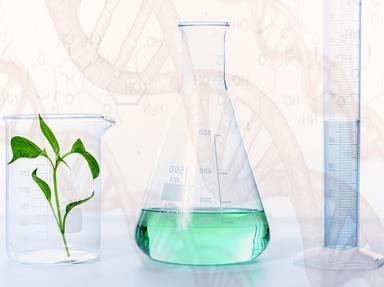Quiz Answer Key and Fun Facts
1. Let's first take a look at some of the obvious chemical changes that a substance can undergo. In the transition from 77 degrees Fahrenheit (25 degree Celsius) to 111 degrees Fahrenheit (44 degrees Celsius), both francium and rubidium melt. Those two elements are located in Group I of the Periodic Table, and can be described as which of the following?
2. The organic compound n-pentane (that is, straight-chain pentane) will boil at 96.8 degrees Fahrenheit (36 degrees Celsius), which is significantly higher than other hydrocarbons of smaller length, and its branched counterparts with five carbons. Which of the following types of intermolecular attractive forces, expressed by n-pentane, best explains why the hydrocarbon with a large surface area has a relatively high boiling point?
3. Gases behave differently at different temperatures, too. Remember that temperature is a measurement of a gas' average kinetic energy, which, for a particle, is proportional to the square of the molecule's speed. If a gas' absolute temperature increases by a factor of four, by what factor will its molecules' average velocities change?
4. The ideal gas law governs how temperature, pressure, and volume are related in a gas at high temperatures and low pressures--the criteria for the gas to behave "ideally." Consider an isolated gas whose temperature increases from 77 degrees Fahrenheit to 111 degrees Fahrenheit (a change of about 19 degrees Celsius). Which of the following changes could happen to the gas?
5. Consider an aqueous solution of 1M calcium chloride (CaCl2). If this solution's temperature increases, the molarity of calcium ions slightly decreases. Which of the following physical phenomena is responsible?
6. You're trying to dissolve solid calcium carbonate and gaseous oxygen in water at 77 degrees Fahrenheit (25 degrees Celsius), and it's not working, so you increase the temperature to 111 degrees Fahrenheit (44 degrees Celsius). Which of the following about solubility at higher temperatures is true?
7. Thermodynamics is the branch of chemistry dealing heat and energy transfers, so it's understandable that temperature plays a large role. Consider an exothermic reaction in equilibrium, where the enthalpy change is negative. This means that heat is released to the surroundings during the reaction. If temperature increases, what will happen?
8. Consider the hypothetical reaction A + B -> C + D.
Let's say the entropy change is +50 J K^-1 mol^-1, and the enthalpy change is +15 kJ mol^-1. That means that, as the temperature is increased from 77 degrees Fahrenheit (25 degrees Celsius) to 111 degrees Fahrenheit (44 degrees Celsius), the Gibbs free energy change for the reaction changes from being positive to being negative. Which of the following adjectives describes the reaction now?
9. In general, increasing temperature will increase the rate of all chemical reactions. That's because, at higher temperatures, more molecules will have enough energy to collide successfully with proper orientation to form the products; that is to say, more of them will surpass the energy barrier required for the reaction. What's that energy barrier commonly known as?
10. Because 77 degrees Fahrenheit/25 degrees Celsius is usually considered thermodynamic standard conditions, shifting the temperature up will require adjustments to our normal chemistry relations. One such equation to adjust for non-standard conditions is the Nernst equation, which can be used to find the overall potential for which of the following?
Source: Author
adams627
This quiz was reviewed by FunTrivia editor
WesleyCrusher before going online.
Any errors found in FunTrivia content are routinely corrected through our feedback system.

